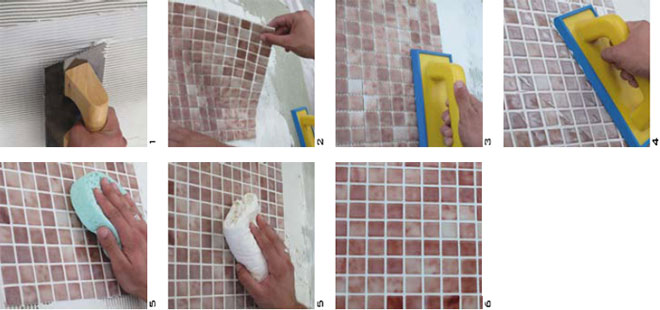| Vidrepur Mosaic Glass Tiles - Application Directions | ||||||||||||
 |
||||||||||||
|
||||||||||||
| Recommended Substrates Well cured mortar beds-ANSI A108.1B (cured a minimum of 7 days). Cementitious backer units (CBU)-ANSI A118.9 (Note: An ANSI A108A-2.1.8 membrane is required behind all CBU installations in wet areas. Concrete slabs (on grade) cured for 28 days minimum. Gypsum board (dry areas only)-ASTM C1396 or ASTM C1396M-04. NOTE: Directly bonding glass tiles to wood substrates is not recommended. All surfaces to receive tile shall be left clean, and free of dust, oil, grease, paint, tar, was, curing agent, primer, sealer, adhesive residue, form release agent or any other deleterious substance and debris which may prevent or reduce adhesion. Glass tile high expansion and contraction requires the installation of movement joints. Setting Materials We recommend any high grade flexible mortar system (latex modified) as a setting material for mosaic glass tiles. For grouts, a premium polymer-modified unsanded grout for joints from 1/16" (1.5mm) to 1/8" (3mm) wide. For grout lines larger than 1/8" (3mm) wide use sanded grout. |
||||||||||||